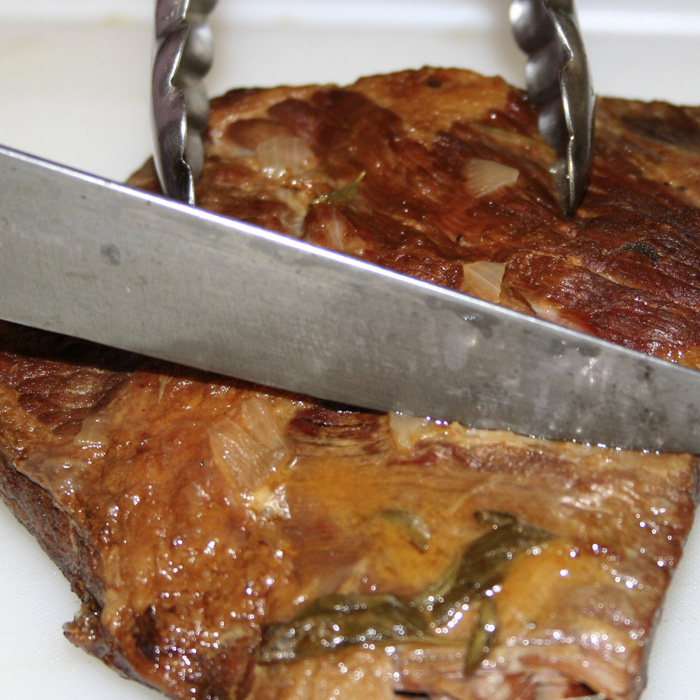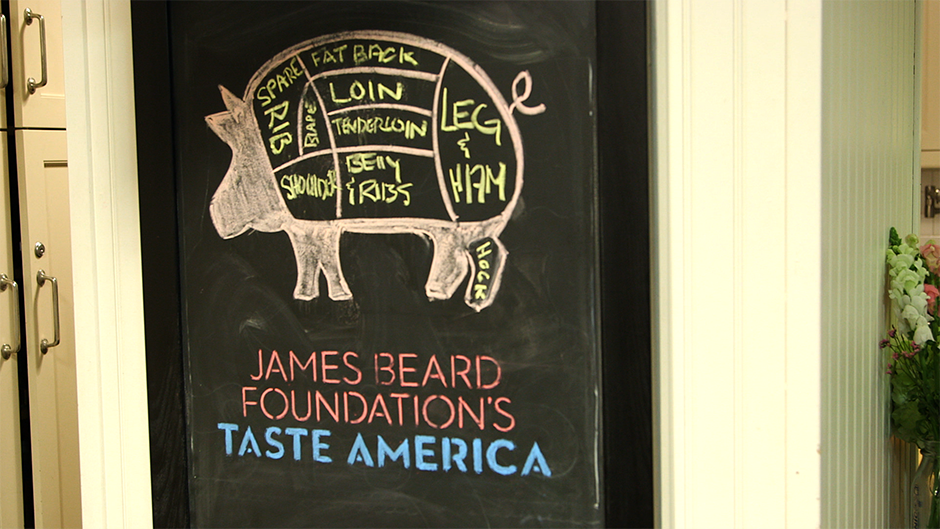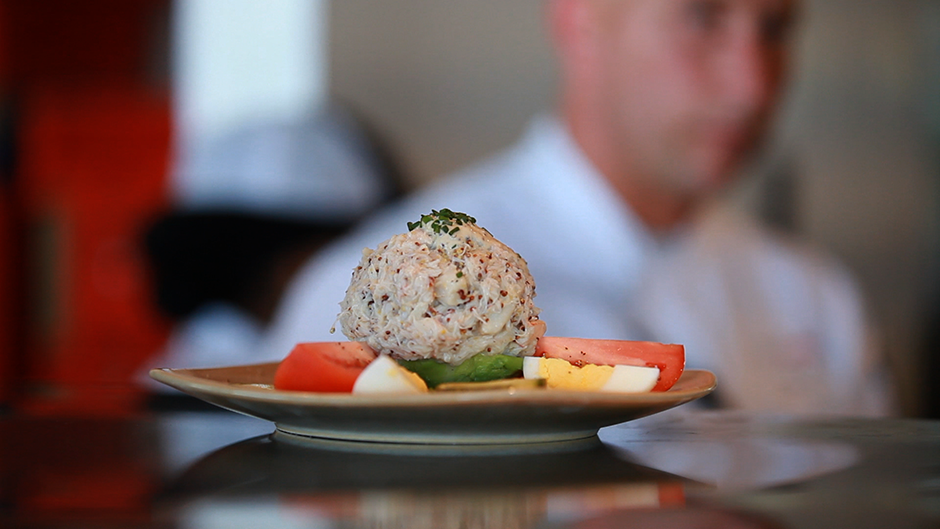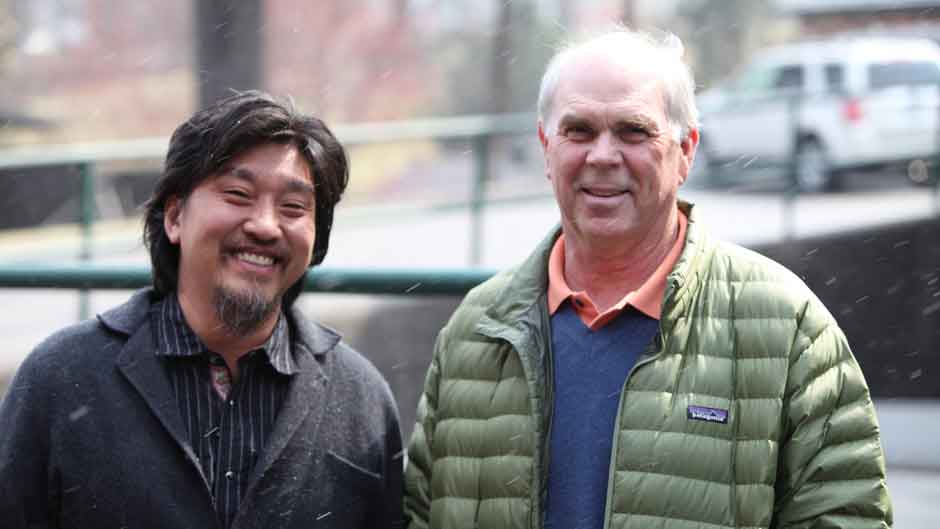Located under the shadow of the majestic Mt. Shasta in Northern California, Prather Ranch is a sustainable, 40,000-acre cattle, hay and farming operation.
We met up with owner and certified organic beef producer Doug Stonebreaker to find out more about eating grass-fed beef.
What’s the story on Prather Ranch?
Doug: Prather Ranch proper started out and was owned by Walter Ralphs and was purchased up on the northeast side of Mount Shasta. In or around 1964, Walter was the original owner of Ralph’s Grocery stores in Southern California. He started them probably back in the 1930s. He was really a pioneer, being one of the first people to think about bringing together all of these foods under one roof. He sold the business in 1964 and went out and bought Prather Ranch, which had been there since the 1800s. However, it was just a small working ranch, beautiful but not a lot going on. It was very isolated.
Walter was a forward thinking guy and started raising these cows. So it kind of plugged along for a long time. It just so happened that as time went on, this idea of organic, grass-fed beef started to get a foothold. There were some folks who came along — including myself a bit later — who said, hey, let’s try and market these products here in San Francisco. Jim and Mary Rickert, who managed the ranch for 30 years, also went out and did a few farmers markets. So in some sense, they were the first folks out trying to sell meat in farmers markets.
It was challenging, as the early organic movement in the States was focused more on vegetarian products, as opposed to Europe, where agri-biologica was always both a meat and vegetable type of thing. So we had a hard time at first. A lot of markets didn’t want us in there. Everyone was very pro-vegetarian and so forth. So it took a while to gain a foothold. Obviously this has changed now.
When did you first open the retail operation and really begin to market the product here?
Doug: In 2003, after doing the farmers markets for some time (as well as raising my own pigs off on my own) I had the opportunity to come into the Ferry Building. They asked us to come inside and sell the product. At the time it was a big risk for us, going from dragging our trailer around farmers markets to going to a full retail experience. It was a grand experiment at the time, as we did not know if people would take to us, not being a butcher per se but rather a direct link between ranches and consumers. And so far so good. We also just started a bison program following the same model, and so far it’s working really well.
You know, it’s said that Prather originally was raising cattle to sell the bones to the medical industry.
Doug: Well, that’s not why they raised cattle, but when the pharmaceutical industry started looking around for bovine bones to make bone screws for humans, and they needed a source of collagen for a base for medicine, it was hard to find. They needed it be a really clean source. Prather Ranch just happens to be isolated and happens to be a closed herd, which means you do all the breeding on the ranch. It’s very clean. We have all the certifications and organic protocols in place. It was one of the first ranches to be certified organic in the country. So the medical guys said, hey, Prather can do this for us. In the early days, the pharmaceutical business helped Prather a lot to stay alive.
The reality at that time of selling grass-fed organic beef, along with all of your costs, was incredibly challenging. You were trying to be integrated by raising your own hay, doing your own slaughtering, raising our own animals, etc., and then trying to find a marketplace for it at a time when no one really cared.
We were competing with giant, big ag. No one was thinking about grass-fed or organic. It seemed virtually impossible. Having the pharmaceutical guys buy some of the bones and collagen really helped keep the wheels on, and to this day is still a big part of what’s done. There are only 20 beef cattle coming out of Prather Ranch every week. To grow with that closed herd is extremely difficult.
How many head of cattle do you have, total?
Doug: There’s about 1400 mother cows. So then you add calves, so that may double it. On a whole, Prather Ranch manages about 50,000 acres of certified organic land. So it’s a very sustainable operation from that standpoint. Prather works with conservation easements and is very bio-diverse. It’s a pretty unique place.
There are a lot of problems with the larger pork processing industry. The same holds true for beef. Can you talk a little bit about this?
Doug: Gosh, there are so many problems, it’s difficult to tackle. For anyone interested, I strongly recommend reading Hugh Fearnley-Whittingstall’s River Cottage Meat Book. He explains in poignant detail the problems with the cattle industry, both here and in the UK/Europe, and beyond.
The problem is that when you have hundreds of thousands of animals confined to feed lots, they tend to develop diseases. They are injected with antibiotics in order to keep them alive. Also, they’re not roaming around free, eating grass, but are fed various supplements, many of which do not lead to good-tasting beef. Then there is all the cross-breeding that happens. It’s a really big mess.
The nice thing about Prather is that any of our ground beef comes from a single cow. Using our tagging and cataloging system, we can tell you which cow, the cow’s mother, etc. There’s no second guessing.
We are going to do a recipe using brisket. Can you talk about what it is and what part of the cow it comes from?
Doug: The brisket is essentially the pectoral muscle. So it’s the chest/breast muscle. It’s got that striated texture and tends to be very thick and very beefy in flavor. If it’s good quality,
it should have a bit of fat cover, which braises the meat in its own fat when cooked properly. Because it’s a big piece of meat, and very tasty, it can feed a lot of people. Various traditions have their own source and form of brisket recipe. The Jewish have their own way of cooking it. In the United States, you see it in the form of shredded, barbecued beef.
Recipe: Winter Braise of Prather Ranch Beef
PDF eBook: Here's the Beef
Download the eBook based on the full interview by San Francisco Bay area locavore Chef James Stolich with certified organic beef producer Doug Stonebreaker. Includes Stolich's recipe, Winter Braise of Prather Ranch Beef.
Download the PDF






